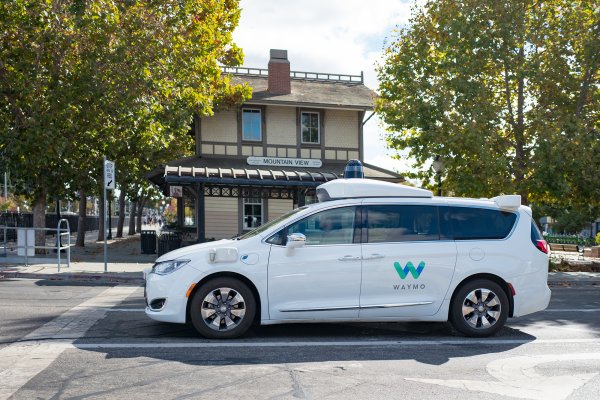
Photo: how autopilot works in a car (Getty Images) Author: Konstantin Shirokun
Journalists today call cars that can move without a driver “autonomous,” “self-driving,” or “unmanned.” Is it really? To clearly classify the capabilities of such machines, SAE International engineers created their own classification – and it is not so optimistic as to talk about “autopilot”.
Read about the level of autonomy that modern “self-driving” cars have reached in the RBC-Ukraine article.
In preparing the publication, materials from the publications Autocentre, AutoBild, Bosch and SAE International were used.
Designers have been working on a car that does not require a driver for decades. There have been successes; the terms “autopilot”, “self-driving”, etc. have appeared in the press. But… Looking ahead, we’ll say that the newest modern “autonomous” cars still have a driver, and he is by no means on the sidelines in the cabin.
Why is the classification of autopilots needed?
The desire of automakers to present their products more clearly has led to some trouble. Cars with systems that have received a stable image of autopilot began to get into accidents. When analyzing them, amazing things were revealed. For example, firstly, what everyone called autopilot turned out to be simply adaptive cruise control and a lane keeping system, and secondly, that the driver’s seat at the moment the car left the road… was empty. Despite the fact that even in sophisticated Teslas with the most advanced “self-control” system, Full Self-Driving, the driver is required to hold the steering wheel with his hands.
But that’s not why the need for a correct description of the capabilities of a particular “self-driving” car arose. Legislation has become a serious deterrent in the spread of autonomous cars. Many states are seriously (and quite rightly, by the way) concerned with the question: who will be responsible if a car “on autopilot” commits an accident with serious consequences? But the first attempts to legislatively regulate the issue came up against the very concept of “autonomy”: which car is considered self-driving, and which is just generously equipped with driver assistance systems?
And then the authoritative professional organization SAE (Society of Automotive Engineers – a community of automotive engineers) created a system for classifying cars with a self-government function. It's not perfect, but it puts a lot of things in their place.

Level 0
Currently produced cars that do not claim the title of “autonomous”, but have driver assistance systems that at some point replace it. The key point is precisely the “temporariness”, the short duration of this replacement. For example, the ABS anti-lock braking system, which performs safe intermittent braking instead of the driver, is not a self-driving system. And even the emergency braking system, which is activated when a danger is detected not by a person, but by electronics, is also not considered such.
Level 1
A pass to the first level of “autonomy” is the presence of at least one system, which, once turned on, completely frees the driver from the labor of controlling one of the control tasks – direction of movement or acceleration-deceleration. Most often we are talking about adaptive cruise control, which does not require driver participation in solving the problem of maintaining a given speed, including when other road users interfere with this.
Level 2
The level when automation concerns both components of the machine control task – acceleration and deceleration, and direction of movement. It also means that self-control is limited by the period for which it is turned on, and also by the conditions in which it is capable of operating (for example, the driver will have to immediately intervene when the car hits the road without markings or bump stops
Level 3
The same as level 2, but possible human intervention in the situation should not be so urgent, since the system itself reacts to emergency situations and takes urgent actions, for example, emergency braking. In other words, with the “autopilot” activated (the quotes are not accidental), the driver can relax to a greater extent – watch a movie, read something on a smartphone. In reality, the differences between Level 2 and Level 3 are quite blurred, although some interpretations explicitly state that Level 3 vehicles must steer themselves around unexpected obstacles.

Level 4
The difference from the previous level is that a person with the system activated is even more free, although he is still considered a driver. He is not required to constantly monitor the situation – he can even sleep or move to another seat in the cabin. An important limitation is that such self-driving is only allowed in certain geographic areas (technically, the issue is that the car's brain uses a 3D map of the area stored in its memory).

Level 5
Full automation of control, the presence of a steering wheel and pedals in the cabin is optional. From the point of view of today’s technologies, such systems are real either with digitized 3D maps of each location along the route carefully recorded in memory, or with the car’s online exchange of information with other road users and infrastructure facilities.
In short
The unmanned future is closer than we think. But if we talk about the complete absence of a steering wheel and pedals, then in our country this will not happen soon. In fact, they are not really needed, these absolute autopilots, but local self-driving technology is more in demand, and it is very close: self-parking or, say, autonomous driving in a traffic jam does not depend on the state of the markings on the road, and on the state of the road itself either. Moreover, cars with such functionality are available in Ukraine now.

Let us remind you that earlier RBC-Ukraine told what needs to be done with the car on the eve of winter.
